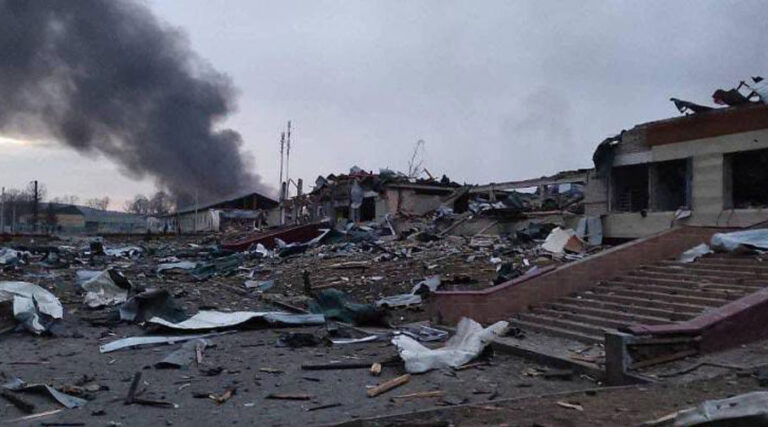
[ad_1]
Artemis 2: On April 3, 2023, NASA announced the four astronauts who would be part of the Artemis II crew. Artemis II is scheduled to launch in late 2024. The Artemis II mission will send these four astronauts on a 10-day mission that will culminate in a close flyby of the Moon. Although they will not go to the surface, they will be the first people to leave the immediate vicinity of Earth and the first to approach the Moon in more than 50 years. The mission will test the technology and equipment needed for future Moon landings and is an important step in NASA’s planned journey to the lunar surface.
NASA outlines some clear goals
As part of this next era in lunar and space exploration, NASA has outlined some clear goals. The agency hopes to inspire youth to take an interest in space, make the broader Artemis program more economically and politically sustainable, and, ultimately, encourage international cooperation for future missions. From my perspective as a space policy specialist, the four Artemis II astronauts are the perfect fit for the process to accomplish these goals.
Who are the four astronauts?
The four Artemis II crew members are highly experienced, three of whom have previously flown in space. One astronaut is exclusively representing Canada, making this an international mission as well. The mission’s commander will be Reid Wiseman, a naval aviator and test pilot. On his previous mission to the International Space Station, he spent 165 days in space and completed a record 82 hours of experiments in just one week. Wiseman was also the head of the US Astronaut Office from 2020 to 2023.
Victor Glover serving as a pilot
The next passenger is Victor Glover, serving as pilot. Glover was selected for the Astronaut Corps in 2013, after logging more than 3,000 flight hours in more than 40 different aircraft. He was the pilot for the Crew-1 mission, the first mission that used a SpaceX rocket and capsule to bring astronauts to the International Space Station, and served as a flight engineer on the ISS.
Mission Specialist Christina Hammock, the lone female crew member
The only female crew member is Mission Specialist Christina Hammock Koch. She has spent 328 days in space, more than any other woman, in three ISS missions. She has also participated in six different spacewalks, including the first three all-women spacewalks. Koch is an engineer by profession who previously worked at NASA’s Goddard Space Flight Center.
The crew also included a Canadian, Jeremy Hansen.
The crew is a Canadian, Jeremy Hansen. He has participated in space simulations such as Nemo 19, in which he lived in a space on the ocean floor to simulate deep space exploration. Prior to being selected into the Canadian Astronaut Corps in 2009, he was an F-18 aircraft pilot in the Royal Canadian Air Force.
Astronauts had unique experiences in space
These four astronauts have gained very special experiences in space. Like the Apollo astronauts, three of them began their careers as military pilots. Two, Wiseman and Glover, were trained test pilots, as were most of the Apollo astronauts. Mission specialist coaches, with their engineering expertise, are more specialized for modern astronauts. The position of mission or payload specialist was created for the spacecraft program, making spaceflight possible for people with a more scientific background.
A Collaborative, Diverse Future
Unlike the Apollo program of the 1960s and 1970s, with Artemis, NASA placed a heavy emphasis on building a politically stable lunar program by fostering the participation of a diverse group of people and countries. The participation of other countries in NASA missions – in this case Canada – is particularly important to the Artemis program and the Artemis II crew. International cooperation is beneficial for many reasons. First, it allows NASA to rely on the strengths and expertise of American collaborators’ engineers, researchers, and space agencies, and to split the production of technologies and costs.
Stiff Competition with China
It also helps provide the US with international leadership in space as competition with other countries – especially China – is fierce. The Artemis II crew is also significantly more diverse than the Apollo astronauts. NASA has often stated that the Artemis program will send the first woman and the first black man to the Moon. Together with Koch and Glover, Artemis II is the first step toward fulfilling that promise and toward the goal of inspiring future generations of space explorers.
The first man to walk in the vicinity of the Moon
The four astronauts aboard Artemis 2 will be the first humans to walk in the vicinity of the Moon since 1972. The flyby will take the Orion capsule closer to orbiting the far side of the Moon. During the flight, the crew will monitor the spacecraft and test a new communications system that will allow them to send more data and communicate with Earth more easily than previous systems.
Artemis 3 will mark the return of humans to the surface of the Moon
If all goes according to plan, Artemis III will mark the return of humans to the lunar surface in late 2025, this time with a diverse crew. Although the Artemis program has a long way to go to return humans to the surface of the Moon, the announcement of the Artemis II crew shows how NASA intends to get there in a diverse and collaborative way.
Read more global events on RawSwag Global.
Buy Space Suit Of Your Own.
[ad_2]



